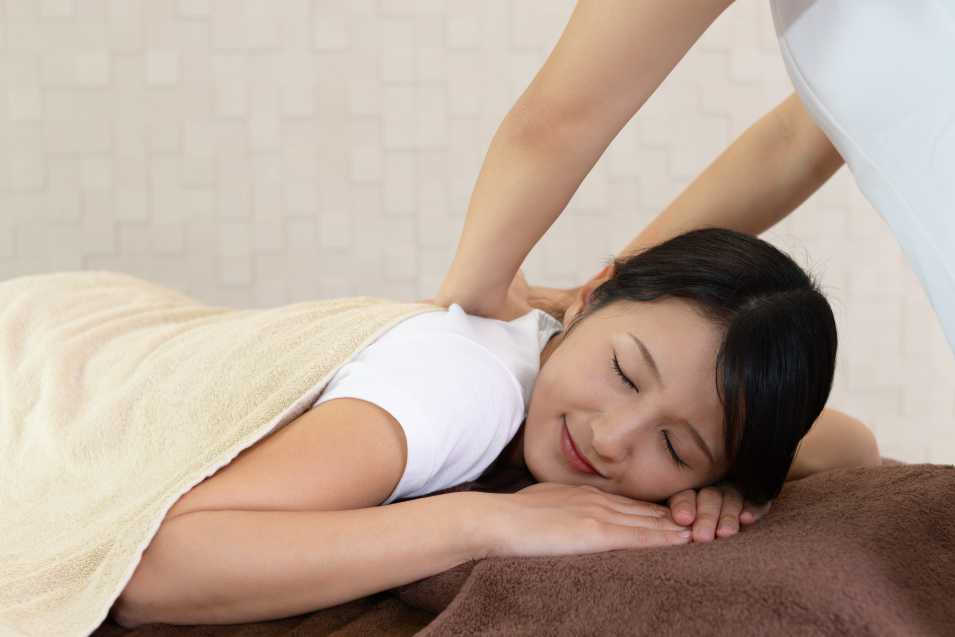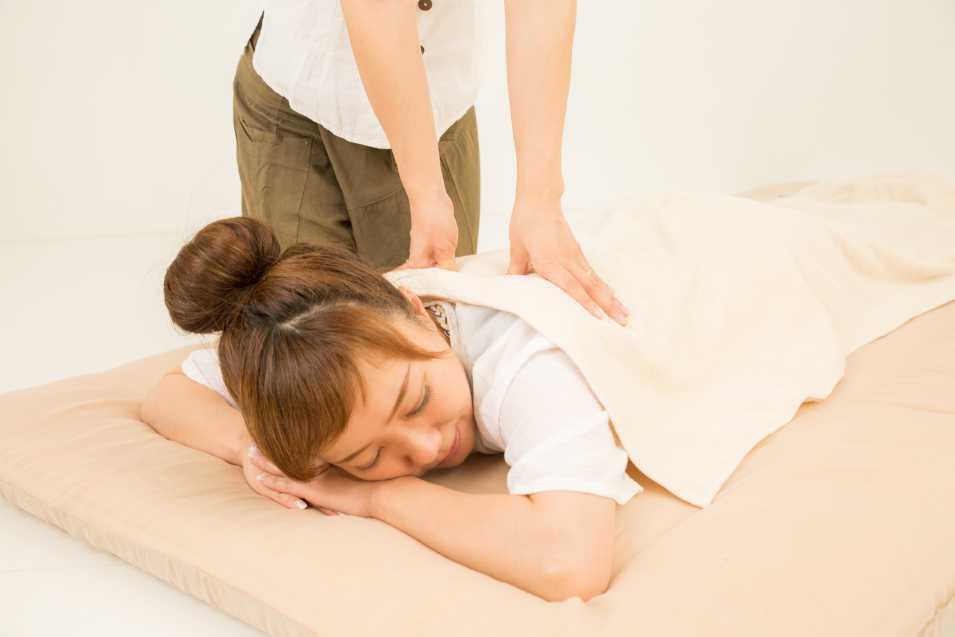Are you seeking a unique and rejuvenating experience that combines relaxation and therapeutic benefits? Look no further than Japanese massage, an ancient art form practiced for centuries in Japan. Rooted in traditional Japanese medicine, this holistic approach to healing aims to restore balance and harmony within the body, mind, and spirit.
Japanese massage, commonly referred to as “anma” or “shiatsu,” encompasses the practice of exerting focused pressure to precise anatomical locations on the body through the utilization of fingers, palms, elbows, and even feet. The practitioner utilizes their intuition and knowledge of the body’s energy channels, known as meridians, to release tension, stimulate circulation, and promote overall well-being.
One striking feature of Japanese massage is its emphasis on using the entire body to deliver a therapeutic touch. Japanese massage incorporates a full-body approach, unlike other massage techniques, where only the hands are primarily used. This enables the therapist to apply deep pressure while maintaining their own physical balance and preventing strain.
Imagine being enveloped in a serene atmosphere, soft music playing in the background, as expert hands work their magic on your body. As the skilled practitioner applies pressure to different points, you may feel a sense of relief as tension melts away. The gentle kneading and rhythmic movements relax your muscles and enhance the flow of vital energy throughout your body.
Japanese massage is more than just a physical therapy; it is believed to impact your overall well-being profoundly. Harmonizing the body’s energy flow can alleviate stress, reduce anxiety, and improve sleep quality. In addition, regular sessions contribute to boosting the immune system, increasing flexibility, and promoting a sense of inner peace.
While Japanese massage offers numerous benefits, consulting a trained and certified practitioner is essential to ensure a safe and effective experience. Your demands and worries will be taken into account as we customize each session to match your unique requirements.
Embark on a journey of relaxation and healing with Japanese massage. Let the ancient wisdom of this extraordinary practice guide you toward a state of blissful tranquility, leaving you feeling renewed, revitalized, and ready to embrace life’s challenges with a rejuvenated spirit.
Benefits of Japanese Massage
One of the key advantages associated with Japanese massage is its capacity to alleviate tension and facilitate the attainment of a profound state of relaxation. The therapist employs a delicate application of force with their digits, palms, and elbows to precise anatomical locations on the body, commonly referred to as acupressure points.
This approach facilitates the alleviation of muscular tension and enhances the circulation of vital energy, commonly referred to as “ki,” throughout the body. Consequently, folks frequently encounter a profound state of calmness and peace subsequent to a session.
Furthermore, Japanese massage is renowned for alleviating pain and improving overall physical well-being. Targeting specific pressure points can effectively relieve muscle stiffness, joint discomfort, and headaches. Skillful manipulation of these areas increases blood flow, which in turn improves oxygen and nutrition transport to working muscles and organs. As a result, individuals may experience reduced pain, increased flexibility, and improved range of motion.
Related Article: Japanese Massage for Pain Management and Rehabilitation
Psychological benefits of Japanese massage complement its physical benefits. The therapist’s rhythmic motions and concentrated attention provide a caring atmosphere for emotional healing and relaxation. Many individuals find that Japanese massage helps to reduce anxiety, depression, and insomnia. Regular sessions enhance mental clarity, boost concentration, and improve overall productivity.
Moreover, Japanese massage is not limited to addressing specific issues; it can also be enjoyed as a luxurious treat for self-care. A unique opportunity to disconnect from the demands of daily life and give attention to one’s own health and happiness. Each stroke and pressure point engages the senses, grounding the individual in the present moment and allowing them to experience a profound sense of inner peace and harmony.

Etiquette and Rituals in Japanese Massage
Japanese massage, known as “shiatsu,” is an ancient practice that combines physical therapy with spiritual and energetic elements. When experiencing this traditional form of bodywork, it is essential to understand and respect its etiquette and associated rituals. By adhering to these customs, you can fully immerse yourself in the transformative power of Japanese massage.
During a shiatsu session, it is customary to remove your shoes before entering the treatment area. This gesture shows respect and helps maintain cleanliness and purity within the space. As you enter, you may be greeted with a bow, a sign of politeness and gratitude.
Once inside, you will be directed to a comfortable mat or futon on the floor. Japanese massage typically takes place on a tatami mat, allowing for greater flexibility and ease of movement. The practitioner will begin by focusing on specific acupressure points along the body’s energy channels, known as meridians. These skilled hands apply firm but gentle pressure to restore balance and harmony within the body.
It is customary to remain quiet and relaxed throughout the session, allowing the therapeutic process to unfold. Engaging in conversation may hinder the benefits of the massage and disrupt the serene atmosphere. Instead, focus on your breath and let go of any tension or stress.
In Japanese culture, silence is revered, providing an opportunity for introspection and self-reflection. Embrace the stillness and let your thoughts drift away. This meditative state enhances the healing effects of the massage, allowing for a profound mind-body connection.
As the session concludes, expressing gratitude to the practitioner is customary. A simple thank you and a bow convey appreciation for their expertise and dedication to your well-being. It is also common to offer a monetary tip, although it is not obligatory.
Immersing yourself in the world of Japanese massage requires understanding and respecting the etiquette and rituals associated with this ancient practice. By embracing the customs, such as removing your shoes, maintaining silence, and expressing gratitude, you can fully experience the transformative power of shiatsu.
Allow yourself to be guided by the skilled hands of the practitioner, and let the healing energy flow through you, restoring balance and harmony to your body, mind, and spirit.
Training and Certification for Japanese Massage Practitioners
Are you ready to take your massage skills to the next level? If you’re passionate about Japanese massage and want to become a certified practitioner, then training and certification are essential steps on your journey. In this article, we’ll explore everything you need to know about training and certification for Japanese massage practitioners.
Japanese massage, also known as “Anma” or “Amma,” has a rich history rooted in traditional Asian medicine. It involves a combination of therapeutic techniques, including pressure points, stretches, and rhythmic movements. Training and certification in this ancient healing technique can improve your skills.
To become a certified Japanese massage practitioner, you must enroll in a reputable training program. Look for schools or institutions specializing in Eastern healing arts and offering comprehensive courses in Japanese massage. These programs typically cover various aspects such as anatomy, physiology, meridian theory, and hands-on practical training.
During your training, you will learn about Japanese massage’s different techniques and principles. You’ll learn how to push particular body areas to boost energy and relax. Additionally, you’ll gain an understanding of the body’s meridian system and how it relates to overall health and well-being.
Moreover, certification plays a crucial role in establishing your credibility as a Japanese massage practitioner. It demonstrates to clients and employers that you have met the necessary standards of proficiency and professionalism. While specifics on training hours and exams needed to become certified may vary by region, such requirements are commonplace.
By becoming a certified practitioner, you open doors to numerous opportunities. You can work in spa wellness centers or even start your own practice. Japanese massage has gained popularity worldwide, and people are increasingly seeking qualified professionals who can provide authentic and effective treatments.
In conclusion, investing in training and certification is a wise choice if you’re passionate about Japanese massage. Through comprehensive training, you’ll deepen your understanding of this ancient healing art and acquire the necessary skills to excel as a practitioner. Becoming certified will enhance your credibility and broaden your career prospects in the rapidly growing field of holistic wellness. Therefore, today is the day to start working for your ideal profession.
